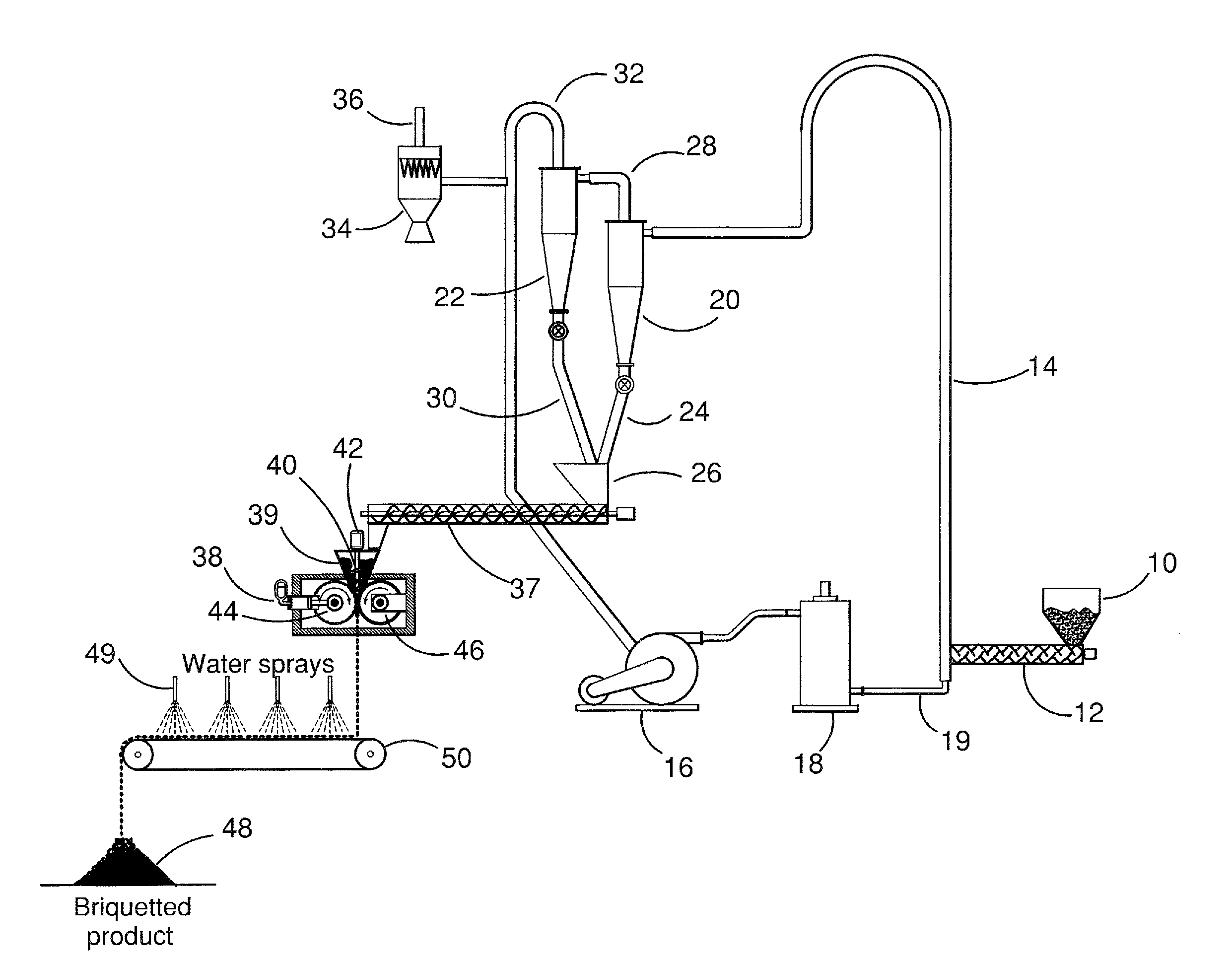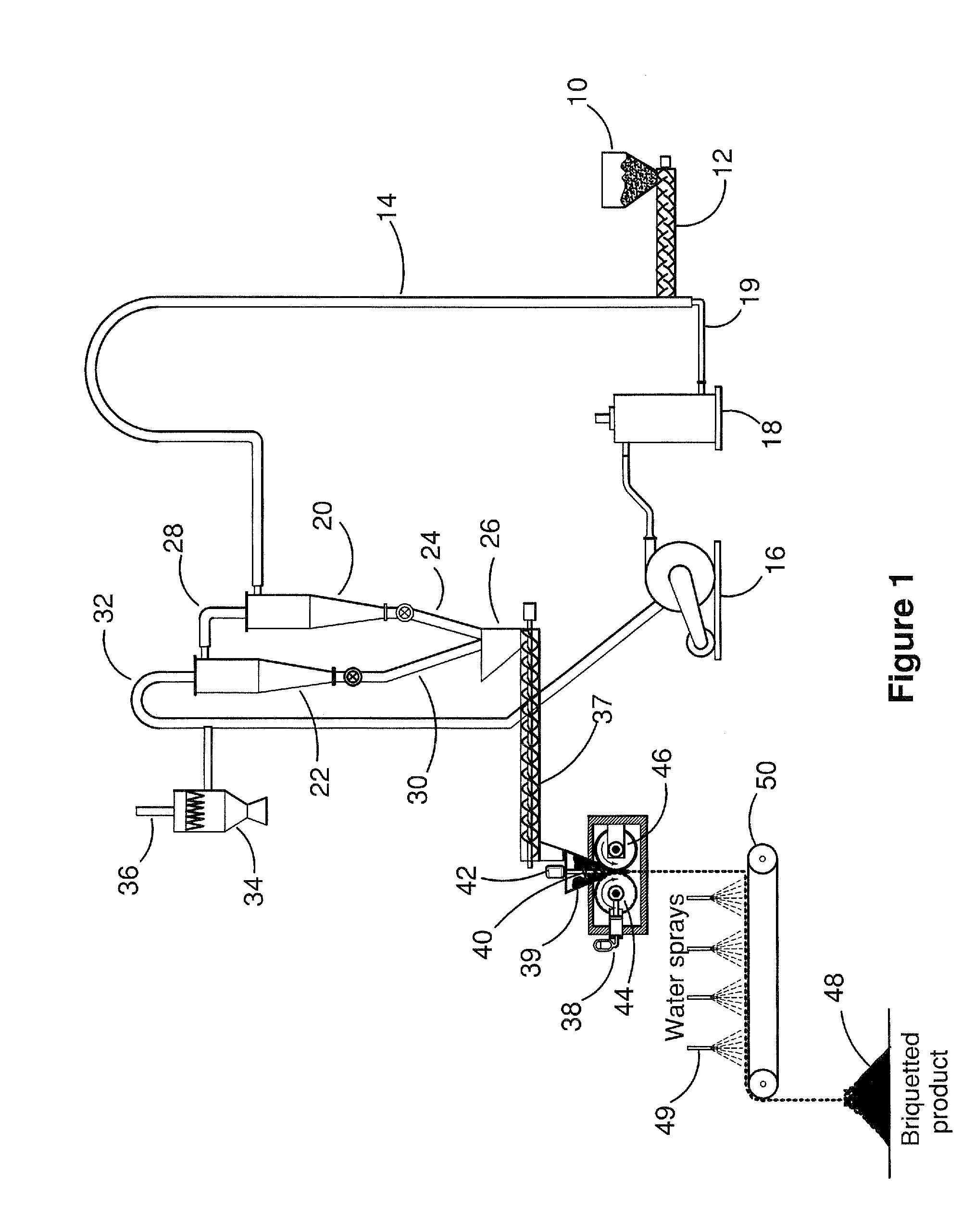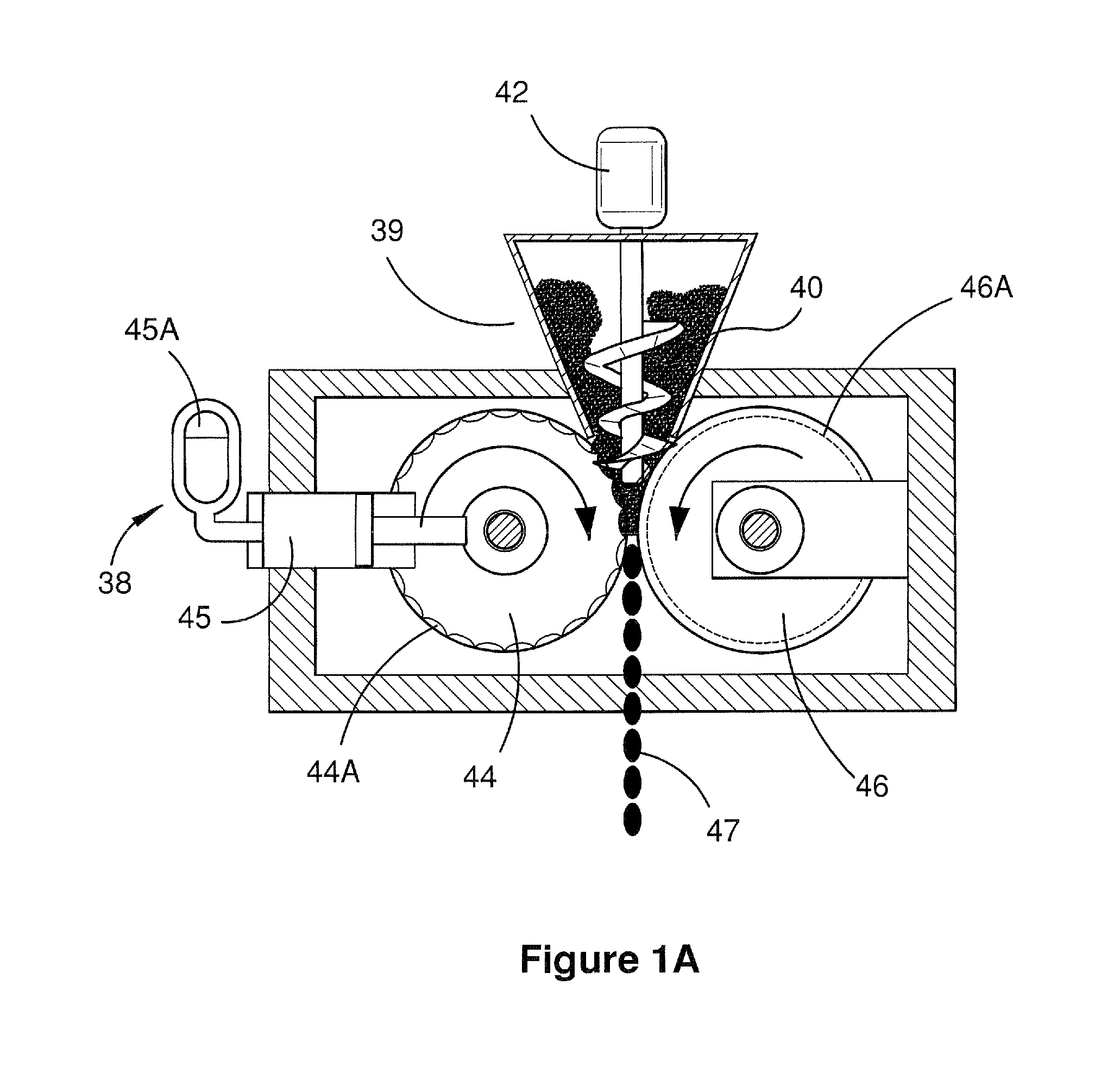Briquetting process
a technology of briquetting process and briquetting material, which is applied in the field of briquetting process and system of briquetting materials, can solve the problems of reducing the calorific value of coal, preventing greater acceptability and use of such coals, and sub-bituminous coals suffering serious spontaneous combustion problems and considerable size degradation, so as to reduce voids and minimise or avoid blowback of gases
- Summary
- Abstract
- Description
- Claims
- Application Information
AI Technical Summary
Benefits of technology
Problems solved by technology
Method used
Image
Examples
Embodiment Construction
[0065]In order to more fully explain the present invention, an embodiment of the invention will now be described with reference to FIG. 1, which shows schematic flow diagram of a process for forming briquettes from bituminous coals or sub-bituminous coals. Although the process shown in FIG. 1 is intended for use in bituminous or sub-bituminous coals, it will be appreciated that the process of the first and second aspects of the present invention may be used to form briquettes from other particulate material.
[0066]In the flow diagram shown in FIG. 1, moist coal is fed from a moist coal hopper 10 through an auger conveyer 12 into a flash heater riser tube 14. A hot gas stream passes through flash heater riser tube 14. The hot gas stream is generated by passing gas from a fan 16 through a gas heater 18 into the flash heater riser tube 14.
[0067]When the moist coal feed is fed into the flash heater riser tube 14, the coal is entrained in the gas stream. As the gas is hot, the temperature...
PUM
| Property | Measurement | Unit |
|---|---|---|
| temperature | aaaaa | aaaaa |
| temperature | aaaaa | aaaaa |
| temperature | aaaaa | aaaaa |
Abstract
Description
Claims
Application Information
 Login to View More
Login to View More - R&D
- Intellectual Property
- Life Sciences
- Materials
- Tech Scout
- Unparalleled Data Quality
- Higher Quality Content
- 60% Fewer Hallucinations
Browse by: Latest US Patents, China's latest patents, Technical Efficacy Thesaurus, Application Domain, Technology Topic, Popular Technical Reports.
© 2025 PatSnap. All rights reserved.Legal|Privacy policy|Modern Slavery Act Transparency Statement|Sitemap|About US| Contact US: help@patsnap.com



